Are you looking for how to clean a central air conditioner?
If yes, we are glad you are here. Your AC system is a big part of what makes your house a sanctuary of relaxation.
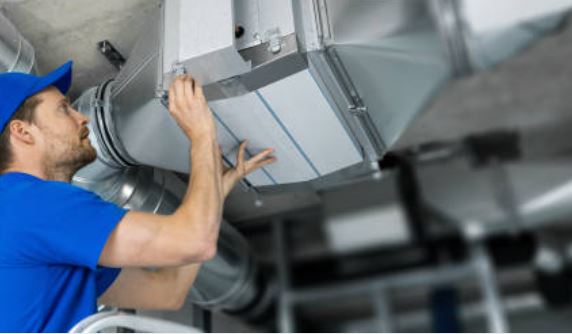
call 661-888-0248
Contact us 24/7 for HVAC services!
However, the accumulation of dust and debris over time can affect indoor air quality and the cooling provided by your AC unit. Similarly, dust and other debris can reduce the effectiveness of heating if your home has an HVAC system.
This is why cleaning your air conditioning unit is vital. It will keep your AC healthier for longer, resulting in fewer major repairs and a lower energy bill.
Read on to learn the central AC cleaning process.
Tips on How to Clean a Central Air Conditioner
Before we delve into how to clean a central air unit, your:
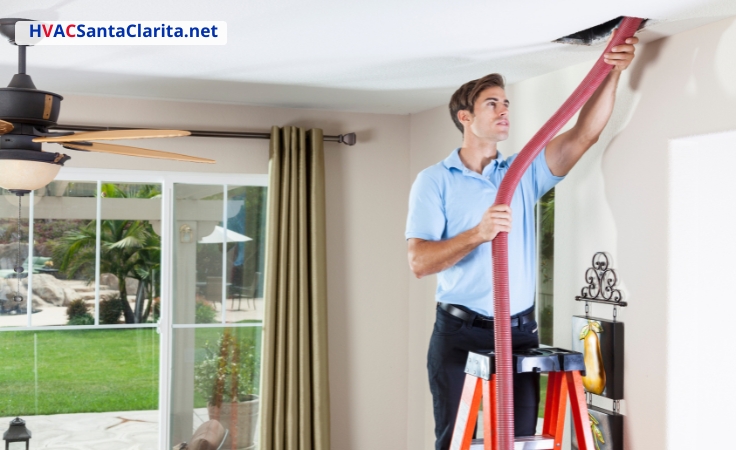
- This activity will consume time. Spare 6–8 hours to do the work properly.
- Certain parts of the washing will require ingenuity and precise movements.
- You may require advanced tools to finish the cleaning.
Although you may be able to do this maintenance independently, a professional may be better qualified for the job, given the necessary patience and fine motor skills. Also, getting professional assistance is better if your unit is dirty or if the AC not keeping house cool.
That way, you won’t risk further damaging your AC.
How to Clean the Interior of Your AC Unit
It’s entirely up to you whether you want to begin cleaning the AC’s interior or exterior parts. We’ll start with instructions for the inside portion.
Turn Off the Air Conditioner’s Power
Why is it necessary to turn off the power at the breaker box? Air conditioners have many moving parts(1), and safety is paramount.

Therefore, it’s advisable to clean during the daytime because you won’t have any lights. However, if your indoor central air conditioner is located in a dark area, such as the attic, you’ll want to set up ample lighting.
Disassemble the AC Unit
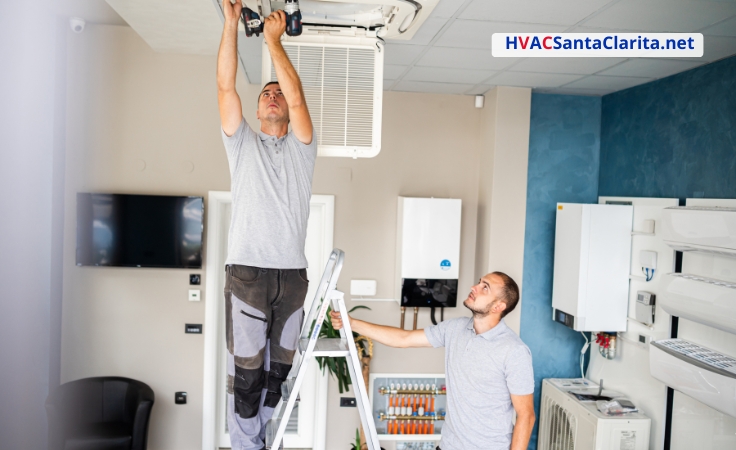
Your blower unit should have a door to the evaporator coil. Once you access the door, you might have to remove the foil duct tape, depending on your AC. The entry is usually held in place by some bolts.
Clean the AC’s Evaporator Coils
Use a soft brush, if available, to clean your AC’s evaporator coils. The dust you scoop will contain whatever particles populate your house. This might include skin cells and, in some instances, pollen.

If you have allergies, consider wearing a mask or hiring a professional HVAC service in Santa Clarita to assist you. The best cleaning agent is a no-rinse coil cleaner, which can be found at your local home improvement store. This spray bubbles up and then drops into the unit’s drain pan, carrying debris and dust.
Spray the foam as evenly as possible, ensuring it reaches all the hard-to-reach areas that are difficult to access by hand. The ideal time to execute this task is on a sunny day, so when you switch the unit back on, the AC will flush out the frost from the coils.
Wash the AC Drain Pan
After the coil cleaner has finished its work, wash out the drain pan. You can start with soap and hot water, and then apply bleach because it aids in sanitization.
Remember to mix the bleach and water 50/50 and discharge the solution down the drain to ensure it is clear(2).
For a longer-term solution, you can purchase AC drain pan tablets, which will prevent algae from growing in your drain.
Clear the Air Conditioner Drain if it is Plugged
This step is unnecessary if your bleach solution washes swiftly down the drain.

If it’s slow, mold, algae, or periodic maintenance and cleaning may have clogged it. The drain tends to block easily because it has a small diameter.
Your drain may lead outdoors, usually near the condenser unit. If not, it will discharge into the drain or utility sink on the basement floor. If you have an attic unit, it may leak down one of your outside walls.
Track the drain to its terminus while carrying a wet/dry vacuum. If you are worried about soiling the filter, you may unplug it from the vacuum.
Hold the vacuum hose at the end of the drain tube. You may restrict air leakage by wrapping a towel around the gap. For the best possible seal, tape the hose and drain. Start the vacuum and run it for 2-3 minutes to remove any accumulated buildup.
If your drain is blocked, find help that will show you how to fix a central air conditioner.
Close the AC Access Panel
Reconnect the access panel with the same screws you removed at the start of the operation. You can bind the access panel’s top and bottom with HVAC metal foil tape.
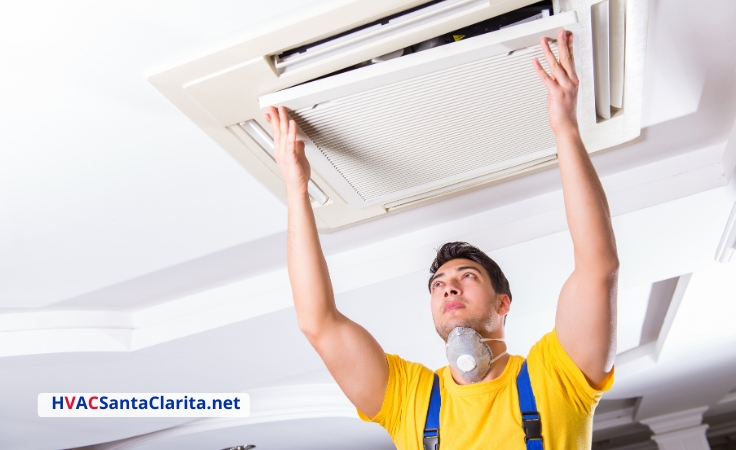
Covering up the manufacturer’s label is not a good idea since a technician may require it to conduct maintenance or repairs on the unit.
That’s all it takes for routine cleaning, but you may encounter difficulties that require expert help. If your evaporator coils are A-frames, you may find it difficult to access certain parts because of the enclosure on both ends of the coils.
If you haven’t thoroughly cleaned your A-frame coils for a long time, you probably need to call in the experts.
How to Clean the Central Air Conditioner Outside Unit
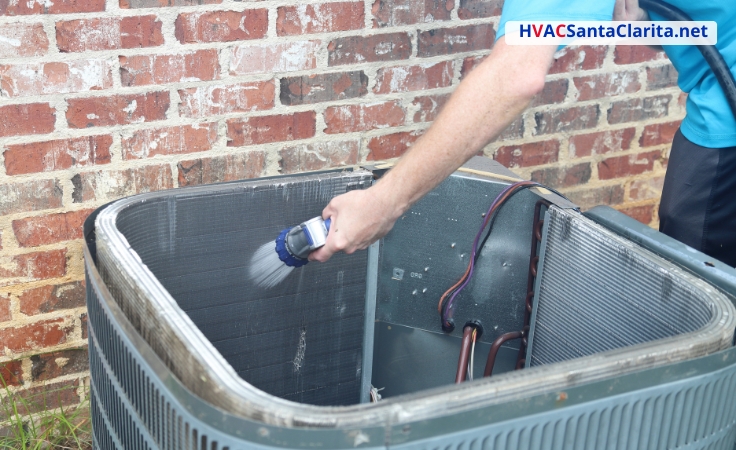
Cleaning the unit’s exterior and condenser coils takes more time than cleaning the inside. The outside of your AC unit becomes dirty quickly due to continuous exposure to dirt and other elements. This is why you’ll also need more advanced equipment to clean it.
To keep your outdoor unit operating at its best, follow the procedure below:
Unplug and Remove the AC Grille
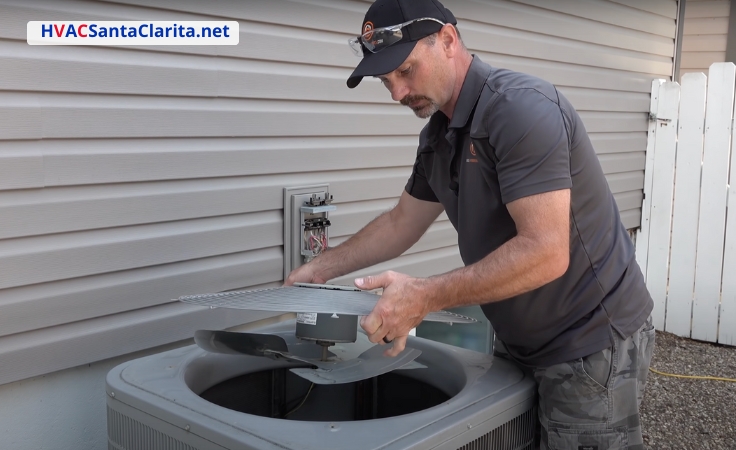
Once again, verify that the electricity cable is disconnected. Turn it off at the outdoor disconnect box if it’s still on. Remove the sheet metal screws from the top of the unit and lift the grille and fan unit.
Clean Out the AC Debris
The amount of debris you find depends on your unit. You may see leaves, seeds, or even small twigs at the bottom if you have an entry-level version.
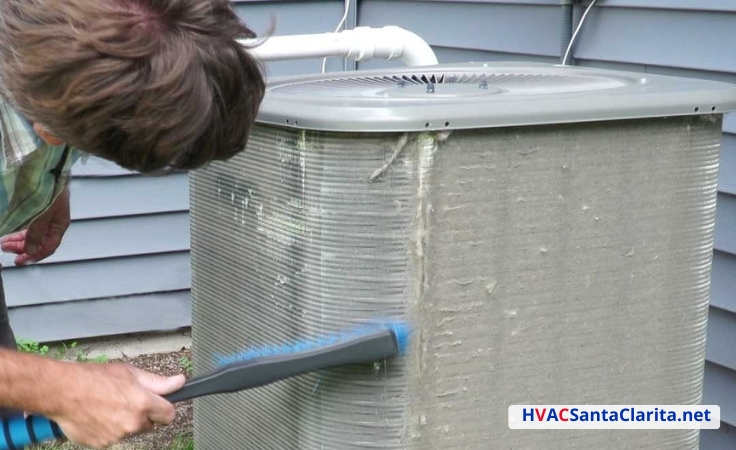
Often, entry-level versions lack guards that prevent debris from entering the fan unit from the top. However, you can easily scoop up the debris by hand or with a wet/dry vacuum.
Clean the AC Coils and Fins
It is easy to learn how to clean AC condenser coils. Like inside cleaning, a coil cleaning solution is also necessary for outside cleaning.
However, this solution is quite acidic and may cause burns. Its vapors are hazardous, meaning you should not use them on your interior coils.
When you visit a home improvement store, ensure that the cleaning solutions for the inside and outside of your home differ.
Dilute or mix up your cleaning solution according to instructions. Once you add it to your pump sprayer, apply it to your coils. In a few minutes, rinse it off with a hose because it will have foamed up.
Avoid using a pressure washer, as the high pressure can easily damage the fins.
Level the Air Conditioner’s Fins
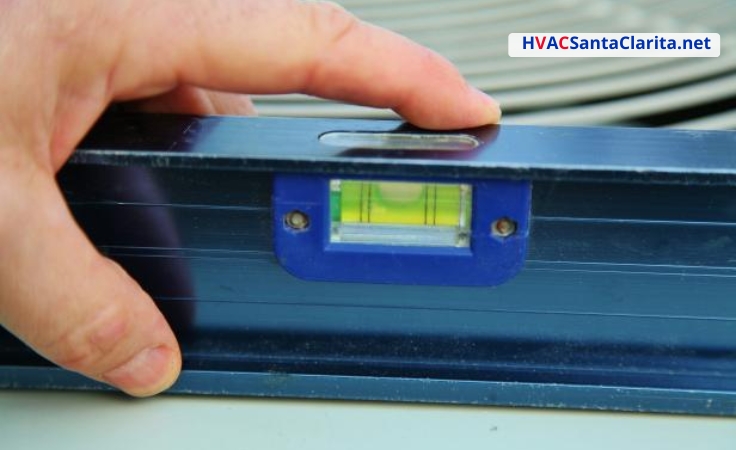
This step is essential because bent fins decrease airflow. A fine tool is perfect for this job. These low-cost kits have teeth that enable you to polish a specific number of fins per inch. Per inch, ensure that you use the correct number of fins.
What you have to do is delicately comb the fins back into place.
Wash Around the AC Unit
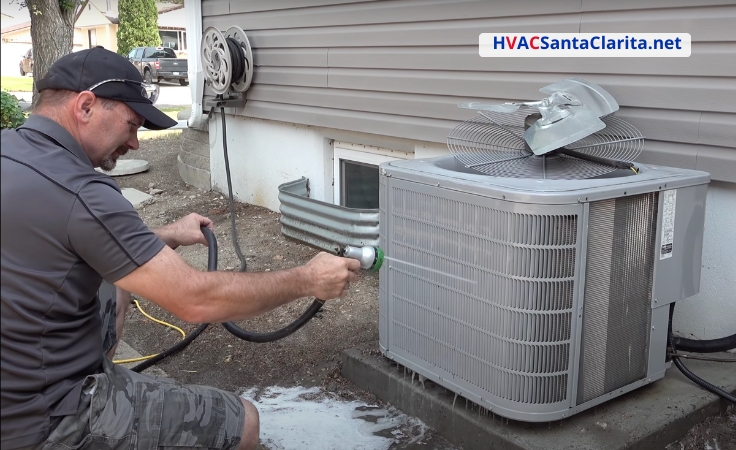
Replace the fan cage and reattach it to the unit using the screws you removed earlier. To ensure optimum airflow, ensure that the space surrounding the AC (at least 2 feet in every direction) is clean and free of debris.
Adjust the AC Unit
Dirt may accumulate underneath your unit, causing it to tilt. If a condenser unit is not level for an extended period, it may fail prematurely, resulting in costly repairs. If you also discover that the condenser is not level, use shims to balance it.
How to Wash Your AC Filter
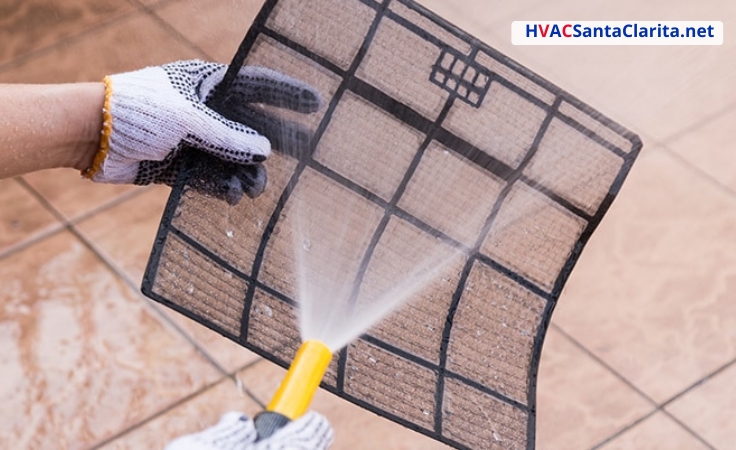
The most important thing to do when cleaning a central AC unit is to clean the filter. Central air conditioning equipment often includes filters designed to be changed rather than cleaned.
Before cleaning the filter on a large unit, read the instruction manual to determine if cleaning the filter is even an option. The processes for removing the filter vary depending on the device and how the home AC air filter installation is done.
However, the steps for cleaning filters are the same.
Clean the Filter
Vacuuming is all you need for routine maintenance. Ensure the attachment doesn’t have a brush to avoid damaging the filter. When you run your hand up and down the vacuum nozzle, you’ll see a significant amount of dust cleared away.
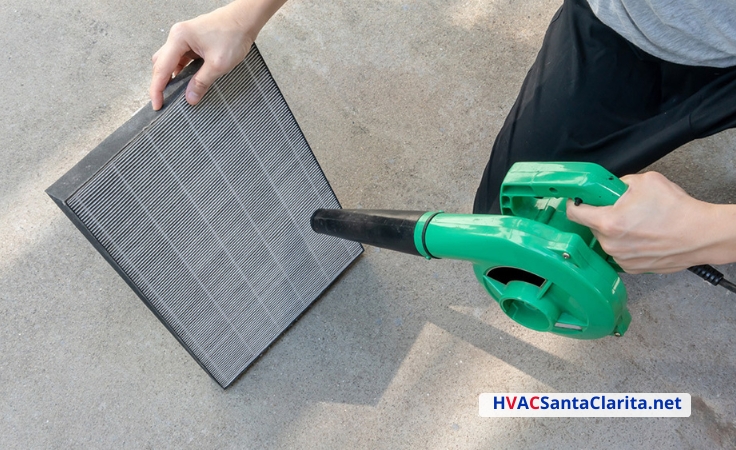
If you have pets, you’ll have to go through the filter many times to remove as much hair as possible.
However, don’t press too hard on the filter when vacuuming. You risk damaging or denting it.
Soak the Filter
Fill a bathtub or a large container with warm water, add regular liquid detergent, and stir well until the water forms a lather. Put the filter in the container and ensure it is completely immersed.
Let the filter soak in the soapy solution for 10 to 15 minutes, moving it back and forth.
You shouldn’t use brushes and other abrasive instruments on the filter as they may cause damage. Use a hose to remove dirt and debris by hosing off one side at a time until the water flows clean.
Spray the Filter
Mix a 1:1 solution of vinegar and water and add it to a spray can. Spray on both filter sides and let it settle for 10 minutes to destroy the bacteria. Before proceeding, rinse the filter under running water.
Dry the Filter
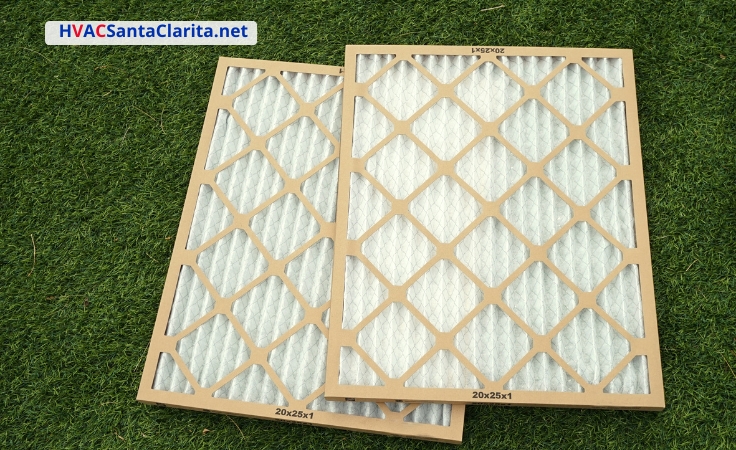
It would help if you let your air filters dry naturally, which might take hours. Place some newspapers on the ground beneath the filter to increase the drying process. After three hours have passed, reattach the filter to your AC unit.
Keeping Your AC in Good Working Order
A clean air conditioner is effective, but cleaning your AC unit by yourself isn’t always practical. Always call in the experts unless you own a shop vacuum or are willing to use chemical-based cleaning agents.
If you are unsure of the AC cleaning process, proceeding with it may result in you needing emergency AC repair.
How to Clean a Central Air Conditioner: Frequently Asked Questions
The procedure for cleaning the central air is straightforward. However, it still remains a challenge to many people. We answer some frequently asked questions on how to clean the central AC below.
Can I Clean My Central Unit Myself?
By adjusting the water pressure on your hose, you can clean the unit yourself. However, if you’re uncomfortable performing this task, don’t think twice about outsourcing the services of an HVAC professional.
Is it Safe to Spray Water on Your AC While Running?
If your AC needs a thorough cleaning, you can safely spray water on it; nothing detrimental will occur. You can also spray water on your unit’s condenser for sustained efficiency and optimal performance.
How Often Do I need to Clean my Central AC
You should clean your air conditioner at least twice a year, once during the fall and once when it’s time to switch to heat mode.
Final Thoughts on How to Clean Central AC Unit
If you have been searching for “how to clean my central air unit”, we are glad you have the issue solved now.
It is a straightforward process that can be completed in half a day. If you have no time or are unable to clean it yourself, feel free to contact HVAC Santa Clarita services for professional help.

call 661-888-0248
Contact us 24/7 for HVAC services!
Sources
https://www.wikihow.com/Clean-a-Central-Air-Conditioner
https://www.realsimple.com/home-organizing/home-improvement/maintenance-repairs/air-conditioner-maintenance-tips
